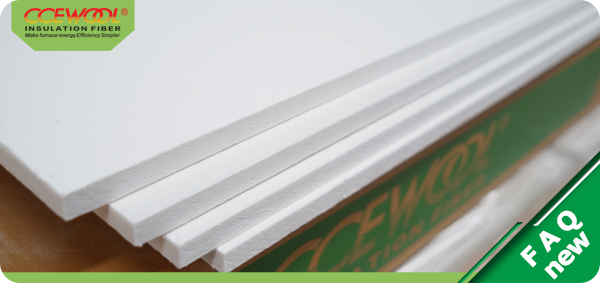Ceramic fiber boards are highly efficient insulation materials, widely used for thermal insulation in industrial kilns, heating equipment, and high-temperature environments. They offer excellent resistance to high temperatures and thermal shock, while also providing exceptional stability and safety. So, how exactly is CCEWOOL® ceramic fiber board made? What unique processes and technologies are involved?
Premium Raw Materials, Laying the Foundation for Quality
The production of CCEWOOL® ceramic fiber board begins with the selection of high-quality raw materials. The primary component, aluminum silicate, is known for its high heat resistance and chemical stability. These mineral materials are melted in a furnace at high temperatures, forming a fibrous substance that serves as the basis for board formation. The selection of premium raw materials is crucial for ensuring product performance and durability. CCEWOOL® rigorously controls material selection to ensure that every batch meets international standards.
Precision Fiberization Process for Superior Insulation Performance
Once the raw materials are melted, they undergo a fiberization process to create fine, elongated fibers. This step is critical because the quality and uniformity of the fibers directly affect the insulation properties of the ceramic fiber board. CCEWOOL® employs advanced fiberization technology to ensure that the ceramic fibers are evenly distributed, resulting in excellent thermal conductivity, which minimizes heat loss in high-temperature environments and ensures superior insulation performance.
Adding Binders for Enhanced Structural Strength
After fiberization, specific inorganic binders are added to the CCEWOOL® ceramic fiber board. These binders not only securely hold the fibers together but also maintain their stability at high temperatures without releasing harmful gases or compromising product performance. The inclusion of binders enhances the mechanical strength and compressive resistance of the fiber board, ensuring long-term use in industrial applications and reducing the need for frequent maintenance.
Vacuum Forming for Precision and Density Control
To ensure consistent dimensional accuracy and density, CCEWOOL® employs advanced vacuum forming techniques. Through the vacuum process, the fiber slurry is evenly distributed into molds and pressure-formed. This ensures that the product has ideal density and mechanical strength while maintaining a smooth surface, making it easier to cut and install. This precise forming process sets CCEWOOL® ceramic fiber board apart from other products in the market.
High-Temperature Drying for Product Stability
After vacuum forming, the ceramic fiber board undergoes high-temperature drying to remove excess moisture and further enhance its structural stability. This drying process ensures that the CCEWOOL® ceramic fiber board has excellent resistance to thermal shock, allowing it to endure repeated heating and cooling without cracking or deforming. This guarantees both its longevity and insulation effectiveness.
Rigorous Quality Inspection for Guaranteed Excellence
After production, each batch of CCEWOOL® ceramic fiber boards undergoes strict quality inspection. Tests include dimensional accuracy, density, thermal conductivity, and compressive strength, among other key metrics, to ensure that the product meets international standards. With ISO 9001 quality management certification, CCEWOOL® ceramic fiber board has earned a strong reputation in the global market, becoming a trusted partner for many companies.
The manufacturing process of CCEWOOL® ceramic fiber board combines advanced technology with strict quality management. From raw material selection to final product inspection, every step is meticulously controlled. This high-performance process gives the product excellent insulation, high-temperature resistance, and a long service life, making it stand out in various high-temperature applications.
Post time: Sep-23-2024


